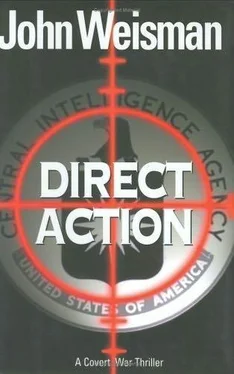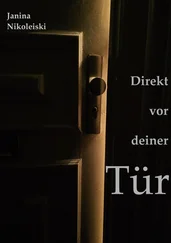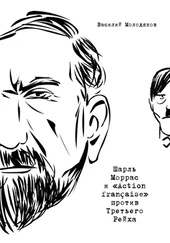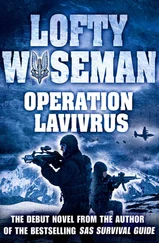Well, Salah was right about that. The 4627 Company had more Top Secret-cleared four-plus Uzbek speakers than CIA did these days. In fact, in the spring of 2002, CIA had approached 4627 to recruit, vet, and hire language-capable interrogators for Abu Ghraib prison in Iraq. Langley was offering $2,500 a day plus expenses for ninety-day deployments, and they wanted a minimum of a dozen people. The math was great: 4627’s profit on two ninety-day cycles would be $3.2 million-and Langley wanted a minimum of six ninety-day cycles. But Tony Wyman turned the Agency down cold. It was a slippery slope, he said. One bad apple-one case of prisoner abuse in the newspapers-and the firm’s credibility worldwide would be jeopardized. Let some other contractor take the money and run.
And yet Tom understood the need. It often took Americans weeks to accomplish what trained native speakers could do in a matter of days because the Americans too often had to rely on interpreters-linguists, they were euphemistically called by the Pentagon. It was like trying to play the old kids’ game of telephone. Tom knew it was impossible to recruit an agent using an interpreter. So why the hell did the numbskulls at DOD and Langley believe it would be productive to interrogate hard-core al-Qa’ida militants-Wahabists who were willing to die for their beliefs-that way? It made no sense at all.
Besides, interrogating terrorists was an art as well as a science. The Israelis had perfected it out of necessity. In the United States, until 9/11 at least, terrorism had been largely considered a criminal activity not an act of war. The FBI’s techniques for interrogating terrorists were exactly the same as they were for interrogating bank robbers or mafiosi. Christ, the Bureau was surveilling potential militants at Washington, D.C.’s Massachusetts Avenue mosque the same way they’d taped comings and goings at the old Soviet embassy on Sixteenth Street. Sure, they had audio as well as video from bugs planted inside the Mosque and adjacent grounds. But rumor was, translation lag time at SIOP 15was about nine months.
In the military, interrogator trainees at Fort Huachuca were still using Cold War scenarios. The only change was that instead of calling the role-players Boris, they were calling them Muhammad. At CIA, the subject of prisoner interrogation still took up less than six hours of the basic intelligence operations course taken by trainees at the Farm. Didn’t anybody Get It? Tom zipped the coveralls up to his throat. “Will there be a transcript available to me?”
“We will give you a DVD-full audio and video, as well as a transcript, in Microsoft Word format.” He watched as the American sat on the edge of the straight-backed chair and pulled on the scuffed black leather boots. “Obviously, you will not possess these materials unilaterally.”
“I understand.” Tom yanked the laces secure and tied them in a double bow. “How long can I have with her?”
“As much time as you need. But I don’t think you’ll need a lot of time.”
“Why is that?”
“I believe we were pretty thorough. Reuven has made the interrogation transcripts available, yes?”
“He has-except for the summary and several pages that were redacted.”
“That was because I wanted you to come to your own conclusions. Afterward, we’ll compare notes. You will give me your evaluation of the situation, and I will give you mine.”
“That’s fair.”
“Thank you.” Salah spat the cigarette from his lips and ground it out against the floor. “Remember: you’ll interrogate the woman in French, please.”
“Will do.” Tom looked at Salah. “I could even use a Marseille accent if you think it would be effective.” The accent was something he’d worked on as he created the persona he’d use during the interrogation.
The Israeli cocked his head in Tom’s direction with newfound respect. “Yes,” he said. “It is a good idea.”
“Then I’m ready.”
Salah examined Tom up and down. Tom started for the door, but Salah cut him off. “Wait-” The Israeli slapped the file folder he was carrying onto the chair, rummaged through the drawer of the steel desk, pulled out a wrinkled olive-drab barracks cap, shook it energetically, then slapped it against Tom’s upper arm. “Here-put this on,” he said brusquely. “You have an American-style haircut.”
10:26A.M. Tom pulled the cap on and followed the Israeli. They walked down a long corridor, turned right, descended a flight of stairs, and turned left, entering another ominous, dimly lit corridor lined with heavy gray steel doors.
Interesting. The room where Tom had changed clothes had a concrete floor. So did the corridor. The steps he’d just descended were also concrete, with steel edges. But the floor in this corridor was covered in inch-thick, hard rubber-like the nonslip pads sometimes used in restaurant kitchens. Their footfalls made no noise whatsoever.
Tom worked to keep his emotions under control. It was difficult. He had actually run agents who were terrorists. His first had been a courier for Al Jihad-a handover on his first overseas tour when he’d worked under consular cover in Cairo. There’d been a car bomber in Sudan-a worker bee in the Muslim Brotherhood who was occasionally loaned out to al-Qa’ida. And of course there was Rashid in Paris. Rashid had what-half a dozen Israeli scalps on his belt. But this was different. He’d never interrogated a jailed terrorist before, never got up close and personal.
More pertinent: Tom had had only three days in which to prepare for this one-shot deal. That was like having no time at all. Prior to agent meetings, you often went back over months and months of reports, memorizing the tiniest details, so that if there were contradictions or fabrications, your internal b.s. detector sounded and they could be identified, highlighted, and probed. You asked your developmentals the same question twenty different ways, perpetually searching for minute inconsistencies or tiny discrepancies, because one word could make the difference between success and failure; between a unilateral asset and a double agent; between that agent’s life and their death.
That’s why the bloody recruitment process took so long. Tom shook his head. God-the damn 9/11 Commission was already leaking stories about putting more CIA agents, as they often incorrectly called them, on the street. Either the commission was made up of ignoramuses, or they’d all seen too much TV or read too much Tom Clancy.
The way they talked, all you had to do was hire someone, give him or her six months of training, and poof, presto change-o, a full-grown case officer-Smiley out of the head of Zeus. It didn’t work that way. It could take years to learn the ropes, even if you were talented. You needed mentoring. There wasn’t a day that Tom didn’t silently thank Sam Waterman for taking the time to inculcate the dark arts of tradecraft into him.
The commission acted as if you could stroll into a bar in London’s Shepherd’s Market, spot a suspicious-looking Yemenite Arab sipping a bourbon daiquiri, sidle up next to him, have a ten-minute conversation, and all of a sudden said Arab tells you precisely where Saddam Hussein has cached his weapons of mass destruction, or in precisely which cave in Tora Bora Usama Bin Laden is currently hanging his kaffiyeh.
Jeezus. Didn’t anybody realize it doesn’t work that way? First of all, for every ten pitches you make, you strike out nine times. In Cairo, Tom had botched his first attempt to recruit an agent. He’d pitched an Egyptian Army major attached to the Mukhabarat el-Khabeya (military intelligence service) whom he’d cultivated for more than six months. The officer had looked at him as if he were crazy, stood up, and said, “Do not ever try to contact me again or I will have you arrested.” Recruiting was a risk-intensive business. And when you did finally snare a target, the information you received most of the time was piecemeal-a fragment of a puzzle, not the whole thing.
Читать дальше












